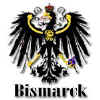CSL
Posts: 18
Joined: 6/9/2006
From: Manitoba, Canada
Status: offline

|
quote:
ORIGINAL: Bossy573
quote:
ORIGINAL: CSL
Haig, Joffre, etc. needed to conduct offensives throughout the war that were sure to cause thousands of casualites, first in order to eat up the enemies reserves and then launch what would hopefully be a decisive strike elsewhere in the line.
This is the line which fed to the public after the catastrophies that were the Somme, Paschendale, Loos, etc., etc. These were designed to be war winning offensives, not a giant Verdun on Germany. Haig continued his offensives long after they had been stopped cold and essentially sent his men to die with no hope whatsoever of acheiving his initial planned breakthrough. He did this, IMHO, out of a simple refusal to admit failure, not through any long range plan to bleed Germany white. And the numbers are clear: the human toll simply did not figure into his thinking.
On the other hand, and this is, IMHO, even more despicable, this is exactly what Falkenhayn attempted to do at Verdun. His logic, taken to its conclusion, would have been "we have 1 soldier left, you have none. We win." How is this at all defendable, even in the context of his times?
And you are a fool if you believe the Somme was ever meant to truely be an offensive designed to breakthrough to the German rear. It was designed to be a wearing out of German reserves, along with the added benefit of shifting German divisions away from Flanders where Haig wanted to conduct his real offensive in 1916. Due to Verdun Haig had to place extra forces along the Somme while also conducting it with a fraction of the troops Joffre had promised him. The fact that the offensive lasted so long was mainly due to the fact that French pressure demanded the British conduct a large offensive to take slack off their forces in Verdun.
Plus, one must also place a large portion of the blame not upon Haig alone, but upon the fact that the British Army, had expanded to numerous times its previous size, therefore having a lack of regular officers, staff officers, and any number of other important pieces of the military puzzle. The fact that the regular army took such a beating in 1914 didn't do anything to help this. And in regards to the wave tactics which were imployed, I will quote Gordon Corrigan from his book Mud, Blood, and Poppycock in length:
Critics of the Somme make much of what they see as insistence on parade ground precision, with men being ordered to walk and keep in line. This had nothing to do with ceremonial parades, but was a perfectly sensible rule to ensure that control was not lost, that men were not shot by their own side, and that they all arrived on the objective together and in a fit state to engage the enemy. Scorn is also poured on the need for the attacking infantry to carry packs weighing sixty pounds. This is one of the enduring myths of the First World War, and derives from an imperfect reading of Field Service Regulations. In fact, it was everything that the man carried and wore that weighed sixty pounds: the uniform he stood up in, the boots on his feet, his weapon and its ammunition. In the attack large packs were left behind, and the small pack contained only the essentials for the operation. That said, each man still had to carry his entrenching tool, extra rations, two gas helmets, wire cutters, 220 rounds of ammunition, two grenades and two sandbags, while ten picks and fifty shovels were taken by each leading company." This was no light burden, and the follow up troops, coming immediately after those who carried out the actual assault, carried a great deal more. It is one thing to capture ground, quite another to hold it. Once into a German position the objective had to be consolidated and held against the inevitable counter attack. This meant that the existing defence works had to be turned round to face the other way, wire obstacles had to be constructed and communications had to be established. Ammunition, grenades and digging implements had to be there, to say nothing of signals cable, water and food, and there was no other way of making all this immediately available to the infantry than by having them carry it with them.
|
 Printable Version
Printable Version
















 New Messages
New Messages No New Messages
No New Messages Hot Topic w/ New Messages
Hot Topic w/ New Messages Hot Topic w/o New Messages
Hot Topic w/o New Messages Locked w/ New Messages
Locked w/ New Messages Locked w/o New Messages
Locked w/o New Messages Post New Thread
Post New Thread